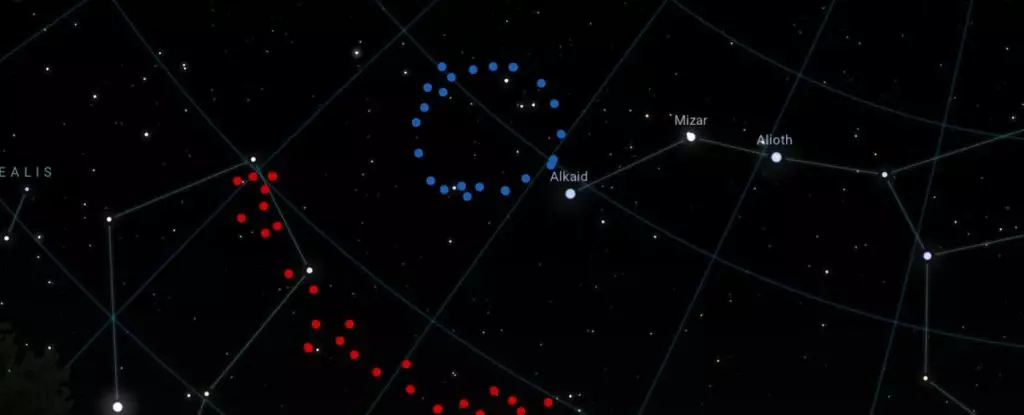The Universe never ceases to surprise us with its mysterious and awe-inspiring phenomena. Recently, astronomers have stumbled upon a colossal structure known as the Big Ring, located in the distant Universe. Spanning an astonishing 1.3 billion light-years in diameter, this ring of galaxies has left experts scratching their heads in confusion. The Big Ring defies conventional explanations and challenges our understanding of how the Universe evolved.
Questioning the Standard Model of Cosmology
Led by astronomer Alexia Lopez of the University of Central Lancashire, the discovery of the Big Ring has significant implications for cosmological theories. This bizarre structure does not conform to any known formation mechanism or structure in the Universe. It raises the question of whether we need to revise the standard model of cosmology to account for such enigmatic structures. Lopez and her colleagues previously discovered another giant structure called the Giant Arc, which is in close proximity to the Big Ring. Both of these structures defy our current understanding of the cosmos.
Astounding Size and Shape
One of the most perplexing aspects of the Big Ring is its sheer size and unusual shape. While it shares some similarities with Baryon Acoustic Oscillations, it is distinct in its corkscrew-like formation, which gives it the appearance of a ring. The circumference of the Big Ring rivals the length of the Giant Arc, further complicating the mystery surrounding these colossal structures. According to Lopez, these structures challenge the Cosmological Principle, which posits that the Universe should appear uniform on a large scale.
The discovery of the Big Ring and the Giant Arc has prompted astronomers to consider alternative cosmological models to explain these anomalies. One such model is Roger Penrose’s conformal cyclic cosmology, which proposes that the Universe goes through endless cycles of Big Bang expansion. This model predicts the presence of ring structures in the cosmos, although it has its own limitations. Another possibility is that these structures are cosmic strings, topological defects in the fabric of space-time that emerged during the early Universe’s expansion. While there is no definitive answer yet, these potential explanations open up new avenues for research and exploration.
The discovery of the Big Ring and the Giant Arc challenges our preconceived notions of the Universe’s vastness and complexity. These structures, with their unprecedented size and proximity, hint at a deeper understanding of cosmic evolution. As astronomers continue to unravel the mysteries of the cosmos, the search for more such enigmatic structures becomes imperative. The enigma of the Big Ring serves as a reminder of the boundless wonders that await us in the vast expanse of the Universe. The research presented at the 243rd meeting of the American Astronomical Society sheds light on these discoveries and sets the stage for further exploration into the mysteries of the Universe.


Leave a Reply